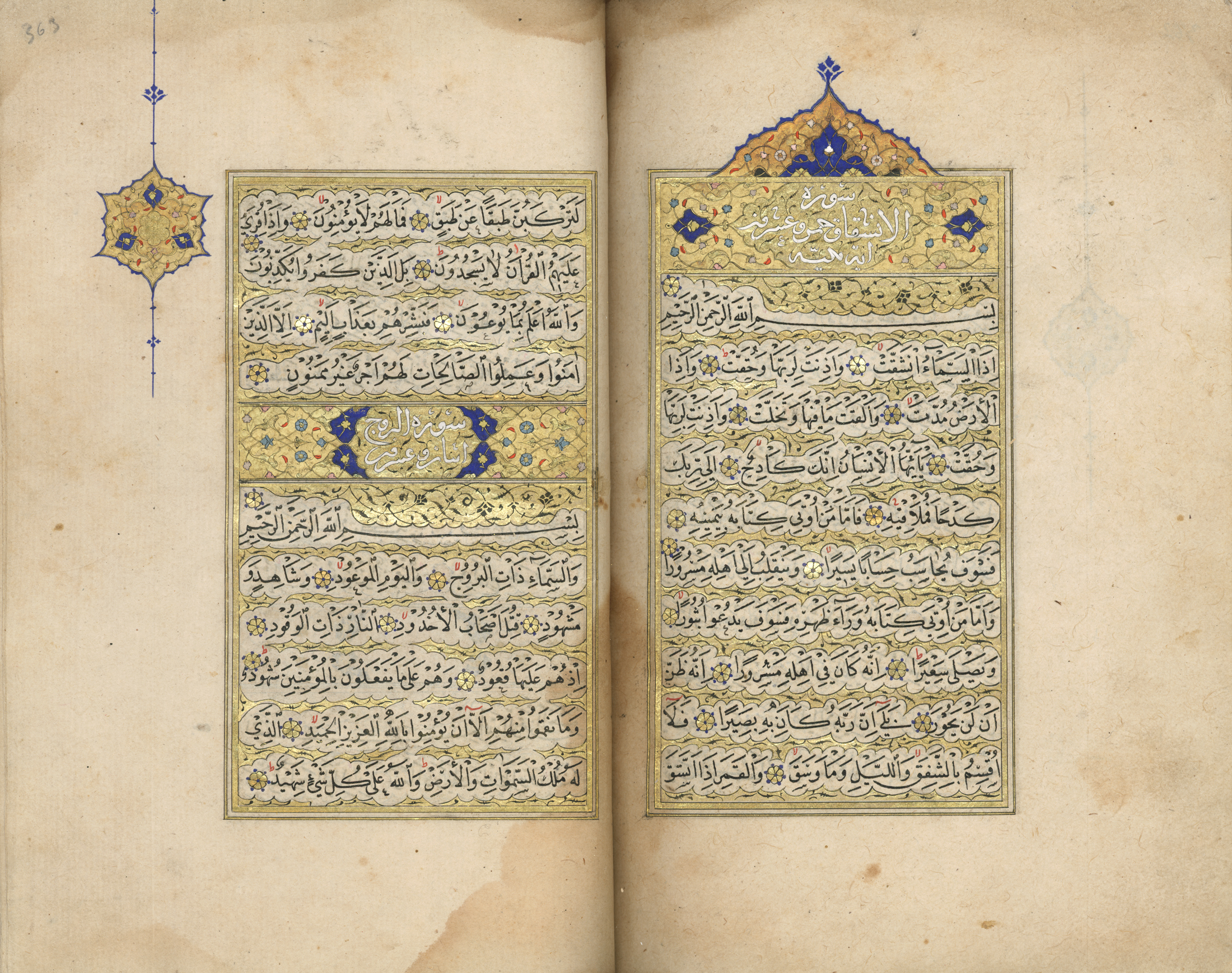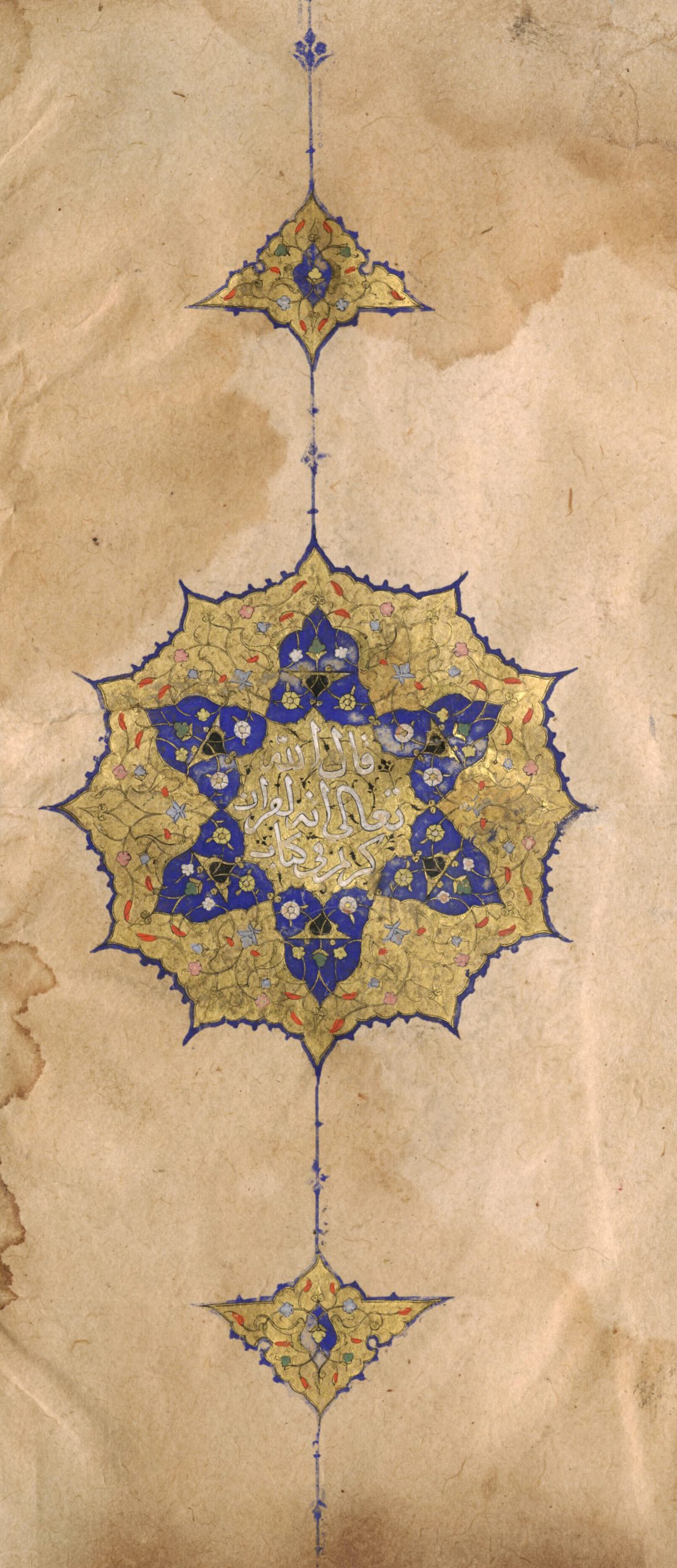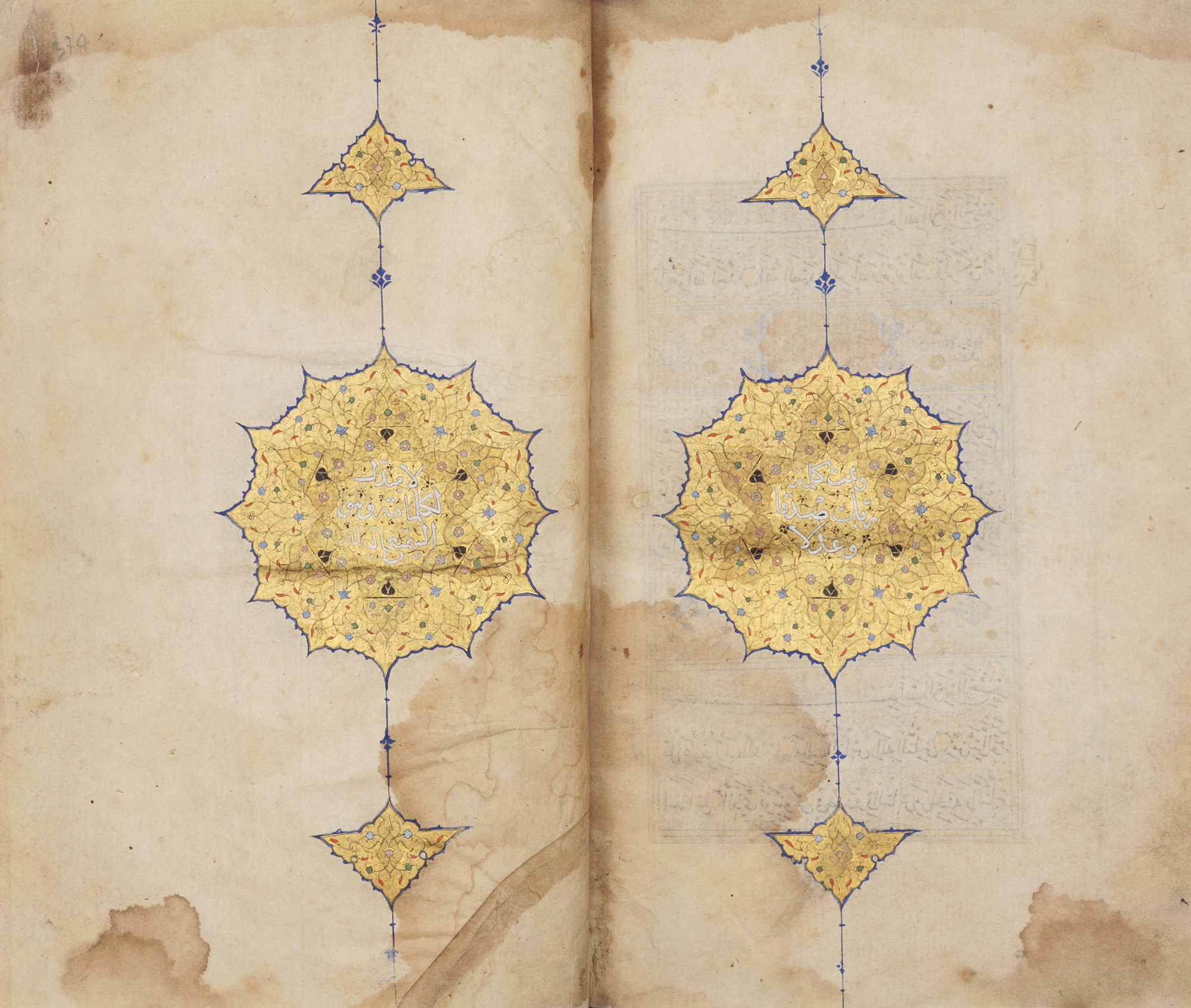 Print Page
Print Page
 Print Page
Print Page
Location: Istanbul, Turkey
Materials: ink, gold and opaque watercolour on paper; modern facsimile binding
Dimensions: 374 folios; 19.7 x 13.2cm
Accession Number: QUR 420
Other Notes:
The finesse and restraint of the illumination of this manuscript are typical of Ottoman court production during the reign of Sultan Süleyman the Magnificent (r 1520–1566). The fine calligraphy and illumination has led many scholars to attribute this manuscript to the outstanding 16th-century Ottoman calligrapher Ahmed Karahisari, a pupil of Asadullah al-Kirmani.
The manuscript begins and ends with two pairs of large rosettes set on facing pages. These bear the Qur’anic verses customary at these points, surah al-Waqi‘ah (LVI) verses 77–80 (folios 1b–2a) and surah al-An‘am (VI), verse 115 (folios 373b–374a).
Script:
main text copied in naskh script, incidentals in thulth; 12 lines to the page
Bibliography:
D. James, After Timur. Qur’ans of the 15th and 16th Centuries, The Nasser D. Khalili Collection of Islamic Art, volume III, London 1992, cat.56, pp.232–5.
J.M. Rogers, The Arts of Islam. Masterpieces from the Khalili Collection, London 2010, cat.255, p.220.


